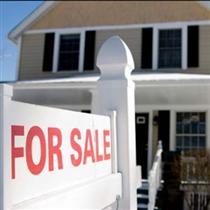Only one thing is important, experts say — the state of the economy
Fiona Anderson
Sun

While the U.S. housing market continues to see mounting foreclosures, the number of mortgages in Canada and British Columbia that are in trouble are near all-time lows.
While the U.S. housing market continues to see mounting foreclosures, the number of mortgages in Canada and British Columbia that are in trouble are near all-time lows.
The introduction of 40-year amortization periods and zero-down mortgages two years ago appears to have had no negative effects.
And that’s because only one thing is important when it comes to foreclosures — the state of the economy, experts say.
In the U.S., almost one per cent of mortgages went into foreclosure in the first quarter of 2008, a record high, Sal Guatieri, a senior economist with BMO Capital Markets, said in an interview.
“And the scary thing is that the rate of change, quarter to quarter, was quite steep,” Guatieri said.
In Canada, foreclosure statistics are not readily available. Instead the Canadian Bankers Association tracks mortgage delinquencies — which occur when mortgage payments are three or more months in arrears. The numbers are from Canada‘s seven major banks, which together issue about 60 per cent of the country’s mortgages.
In B.C., only 0.15 per cent of those mortgages were in arrears in April 2008, the last month for which data is available. That number has steadily declined from about 0.65 per cent in 2001.
Meanwhile, 0.26 per cent of mortgages nationally were in arrears in April, a number that has held fairly steady since 2004.
“And by implication, the foreclosure rate remains quite low — if not historically low — in Canada,” Guatieri said. “And it’s miles different from the U.S. situation.”
That’s because of Canada‘s economic situation, which has been “markedly different” than the U.S. situation, he said.
“We’ve seen much stronger job growth in the first half of this year while the U.S. has faced a steady loss of jobs,” Guatieri said. “And Canadian home prices are still rising, although barely now, as opposed to falling over 15 per cent over the past year in the U.S.“
With rising house prices, Canadians who get in trouble can sell their houses and move on, Guatieri said. That hasn’t been the case in the U.S. where as many as eight million households are what Guatieri calls “upside down” with mortgages greater than the value of their homes.
“And that means there’s just greater incentive for the homeowner to walk away from the mortgage [in the U.S.],” he said.
Canada‘s situation is different, and a housing market problem here would more likely stem from a general economic downturn.
The Bank of Canada has numbers for how many sub-prime mortgages are in arrears. In the first quarter of 2008, 1.6 per cent of mortgages issued by Canada‘s top three sub-prime lenders were behind by at least three months. That’s up from 1.0 per cent in the fall of 2006, when longer-term mortgages and zero-down mortgages were introduced. But it’s still a lot lower than the rate of about 16 per cent in the U.S.
And the sub-prime market in Canada is much smaller than that in the U.S. Last year the Canadian Association of Accredited Mortgage Professionals estimated that less than five per cent of Canadian mortgages were alternative, as they are called in Canada, compared to 20 per cent in the U.S. That number is even lower now as credit has become tighter because of the sub-prime crisis in the U.S., the association’s president and CEO Jim Murphy said in an interview.
Because the sub-prime mortgages are aimed at borrowers with lower credit ratings, “there’s no question that among those types of products you’d probably have a higher arrears rate,” Murphy said.
But it’s unlikely that the federal government’s decision to no longer guarantee mortgages with 40-year amortization periods or zero down payments will affect the delinquency rate, said Michael Gregory, also a senior economist with BMO Capital Markets.
For there to be a rise in delinquencies “you’d probably have to wait for the economy to really weaken, the unemployment rate to rise sharply and then people have a harder time,” Gregory said.
“And that’s not necessarily a function of the innovations that have been happening over the last couple of years,” he said.
Instead it will be a “typical response due to the normal economic cycle.”
© The Vancouver Sun 2008

